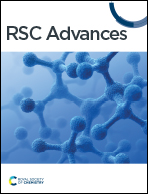Design strategies and biological applications of β-galactosidase fluorescent sensor in ovarian cancer research and beyond
Abstract
Beta-galactosidase (β-galactosidase), a lysosomal hydrolytic enzyme, plays a critical role in the catalytic hydrolysis of glycosidic bonds, leading to the conversion of lactose into galactose. This hydrolytic enzyme is used as a biomarker in various applications, including enzyme-linked immunosorbent assays (ELISAs), gene expression studies, tuberculosis classification, and in situ hybridization. β-Galactosidase abnormalities are linked to various diseases, such as ganglioside deposition, primary ovarian cancer, and cell senescence. Thus, effective detection of β-galactosidase activity may aid disease diagnoses and treatment. Activatable optical probes with high sensitivity, specificity, and spatiotemporal resolution imaging capabilities have become powerful tools for visualization and real time tracking in vivo in the past decade. This manuscript reviews the sensing mechanism, molecular design strategies, and advances of fluorescence probes in the biological application of β-galactosidase, particularly in the field of ovarian cancer research. Current challenges in tracking β-galactosidase and future directions are also discussed.

- This article is part of the themed collection: 2024 Reviews in RSC Advances


 Please wait while we load your content...
Please wait while we load your content...